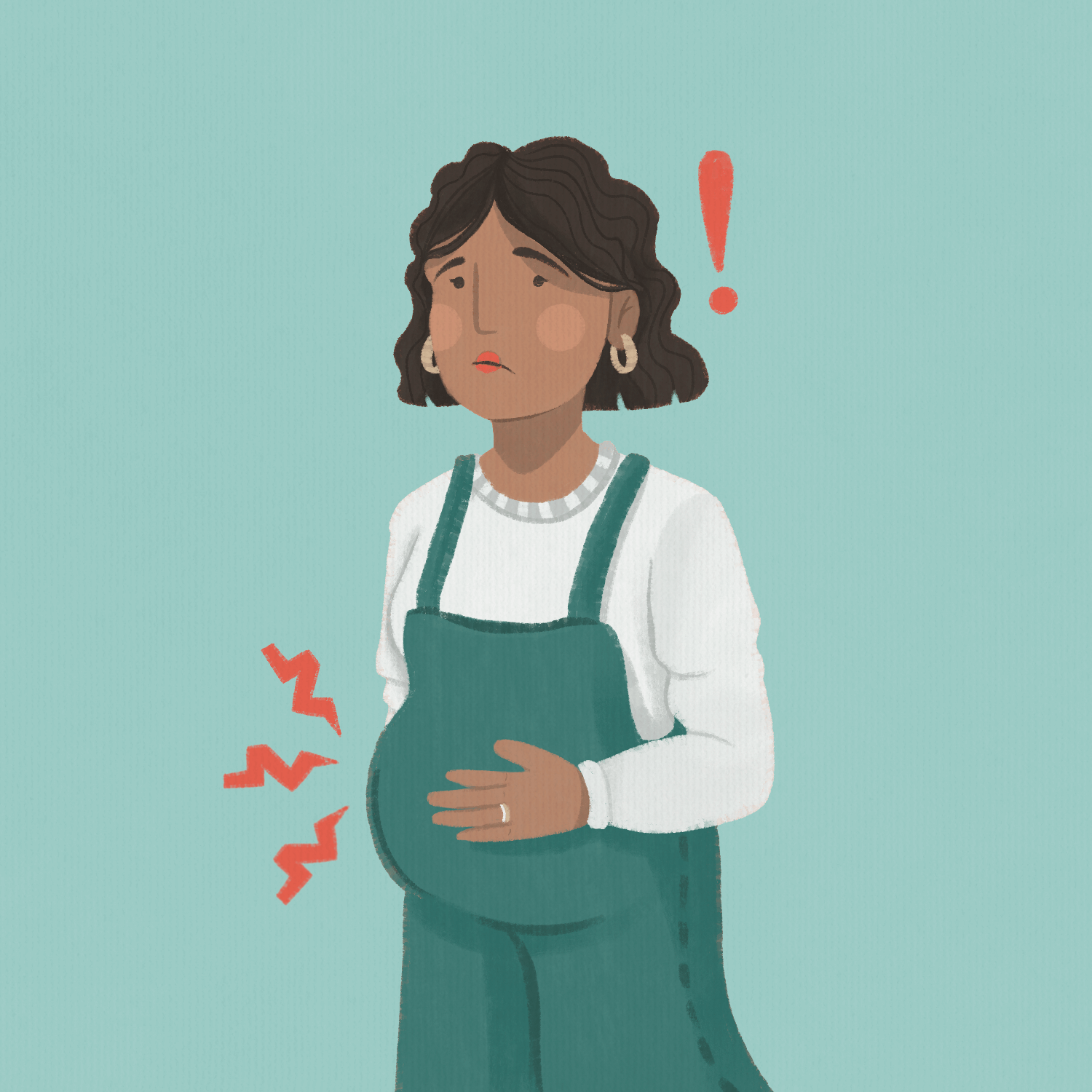Pregnancy Vancouver
Your Journey to Pelvic Wellness Starts Here
We’re so glad you’re taking a moment to check in with your body and learn more about your pelvic health.
Thinking about pelvic health is essential in every stage of pregnancy and beyond.



Understanding Pelvic Health
Pelvic health is the overall well-being of bladder, bowel, reproductive organs and the muscles, nerves and connective tissue that support the pelvic region. Optimal pelvic health often means you don’t think too hard about how these systems are working and changes to their function don’t stop you from participating in your life fully!
- Find out More: Click here for a great video on pelvic health in pregnancy and here for another great video on pelvic health during and after childbirth. You can also download peer reviewed leaflets from here.
Whether you’re planning for a baby, currently pregnant or postpartum, understanding more about your pelvic health can help you prepare and recover following these changes in your body. This patient education tool is a starting point to screening and empowering you with knowledge and resources to support your pelvic health.

This tool helps to screen 7 areas of your pelvic health:
- PHYSICAL ACTIVITY
- MUSCULOSKELETAL HEALTH
- BLADDER HEALTH
- BOWEL HEALTH
- SEXUAL HEALTH
- PROLAPSE/PELVIC ORGAN SUPPORT
- PELVIC FLOOR BIRTH INJURIES
This tool is a guide, not a test. It can also help you understand more about your pelvic health so you can speak to your healthcare provider if you want or need more support.
Remember: it’s never too early or too late to support your pelvic health and prevent Pelvic Floor Disorders.

How to Use This Tool
- For each section, answer “Yes” or “No” based on what is true for you.
- There are no right or wrong answer. Your responses help point you toward resources that may support your wellbeing.
- If you answer "Yes" to any question, don’t worry, we’ll guide you to useful information and next steps.
- At the end, you’ll find links to articles, videos and resources to learn more.
- There are also many resources throughout the pregnanancyvancouver.ca website for you to explore.
Pro Tip: Pelvic health is for everyone with a pelvis and support is available at every stage of life. For more information on pregnancy and the pelvic floor click here.
Disclaimer: This questionnaire is for informational purposes only and is not a substitute for professional medical advice, diagnosis, or treatment. Pregnancy Vancouver is not a licensed healthcare provider. Our aim is to provide patients with valuable information to help you have discussions with your healthcare provider. Always seek the advice of your healthcare professional with any questions you may have about your health or a medical condition. Never ignore or delay medical advice because of something you read here.
Think you can recognize the symptoms?
Click on the tabs below to start your Pelvic Health Check-In.
01. PHYSICAL ACTIVITY
WHY IT MATTERS
Did you know, it is recommended that all adults get at least 150 minutes of moderate physical activity every week. That is movement at a level where you feel like you can still talk but it feels a little breathless and your heart rate is elevated. This can be in minimum doses of 10 minutes, spread out to make up 30 minutes per day, 5 days a week1. Examples of moderate physical activity include brisk walking, recreational swimming, dancing etc. During pregnancy, this recommendation does not change! Physical activity of moderate intensity is integral to physical and emotional wellbeing and helps reduce the risk of urinary incontinence and birth-related pelvic floor injuries. Getting and staying active helps reduce your risk of back pain and pelvic floor symptoms, supports your mood, boosts circulation, and prepares your body for pregnancy, birth and recovery.
1Physical Activity Recommendations for Pregnant and Postpartum Women.
1.1 Do you get 150 minutes of physical activity every week?
If you answer YES to any of the questions below, it may be helpful to discuss your concerns with your primary care provider or a pelvic floor physiotherapist. It is never too early or too late to support your pelvic floor health.
YES – That’s great!
Keep it up! If you are planning a pregnancy or are pregnant, it is encouraged to keep up movement routines you enjoy. It’s also perfectly safe to explore new forms of mild to moderate exercises during pregnancy too. If you’re ever unsure about how to stay active, speak with your maternity provider, primary care provider, a pelvic physiotherapist or exercise specialist to get personalized advice.
Keep moving. Your body will thank you!
LEARN MORE
NO – You are not alone. We know that getting physical activity amidst all of life’s demands can be hard.
When you feel fatigued, discomfort or uncertainty about movement, it can be hard to reach for physical activity. However, often the things that make physical activity difficult are improved by getting it! Physical activity can decrease the risk of pelvic floor symptoms including constipation and urinary leakage. If you’re not currently meeting the recommended 150 minutes of physical activity each week, don’t worry, it’s never too late to start small. Starting with as little as 10 minutes of walking most days can make a big difference for your pelvic floor health, mental wellbeing, and overall comfort during pre-conception, pregnancy and postpartum.
Movement that increases your heart rate, including short walks, climbing the stairs, swimming, or strengthening exercises can help. The goal isn’t about perfection; it is consistency getting going. You can start with 10-minute blocks and build from there.
Examples of ways to get started with movement:
- park your car farther from your destination
- get off the bus 1 or 2 stops earlier
- take 10 minutes of your lunch break to go for a walk
- race your toddler at the park
- take the stairs
Remember, every bit of movement counts! You can ask your health care provider, a pelvic floor physiotherapist or exercise specialist for ideas on how to ease into a routine that supports your goals and your body.
You’ve got this, one step at a time!
LEARN MORE – Helpful resources to get started:
02. MUSCULOSKELETAL HEALTH
WHY IT MATTERS
Growing and changing through a pregnancy is necessary, healthy and important but it does place added physical demands on the body. Sometimes these added demands can reveal or potentially exacerbate underlying or past musculoskeletal issues.
Common musculoskeletal symptoms during pregnancy may be:
- Pelvic pain
- Hip pain
- Low back or Sacroiliac joint pain
- Pubic bone pain
- Tailbone pain
Early identification and management can improve your well-being, sleep, physical activity and overall quality of life.
Screening for musculoskeletal health is a proactive step that can improve comfort, safety, and long-term health for you and your baby. Learning how to identify preventable and treatable concerns can help you have a more comfortable pregnancy.
Seek help from a healthcare professional if your discomfort is interrupting your sleep significantly or stopping you from carrying on with your day-to-day activities. It can be helpful to get support to reduce your pain before pregnancy, during pregnancy or after delivery.
2.1 Did you sustain a fall on your hips or tailbone that resulted in short or long-term pelvic, hip, or tailbone pain prior to a pregnancy?
YES – This is not an uncommon injury!
A previous fall on the hips or tailbone can predispose people to pelvic pain during pregnancy, but that doesn’t mean it has to happen to you! There are many ways to prevent sticky issues from re-arising because the pelvis is stable, strong and pain can be self-managed! Getting regular physical activity, optimizing sleep and helping to manage stress can be protective against pelvic pain in pregnancy. If you have had a previous injury, talk to your health provider, physiotherapist or exercise specialist to help identify strategies to keep you active, promote healing, reduce your risks, and stop the pain quickly if it arises.
LEARN MORE
NO – That’s Great!
Even without a previous fall or injury, getting regular physical activity, optimizing sleep and helping to manage stress can be protective against pelvic pain in pregnancy. The pelvis is stable, strong and adaptable to the demands of pregnancy!
2.2 Do you have/have you experienced persistent back pain (lasting longer than 3 months)?
YES – Chronic/persistent low back pain is common, but can be changed!
People with persistent non-specific low back pain often have pelvic floor concerns too. This can include urine leaking, pelvic pressure or pain with sexual activities. Pregnancy can potentially change these symptoms and worsen or exacerbate the discomfort. There are many ways in pregnancy you can reduce these concerns and prevent back pain. Physical activity, optimizing sleep, managing stress and adding a mobility belt to help get moving can all help. If you aren’t able to manage this alone or have more questions about ways to prevent or manage your pain you can talk to your maternity provider, primary care provider, pelvic physiotherapist or other allied healthcare provider for support.
NO – Fabulous!
Even without previous back pain, getting regular physical activity, optimizing sleep and helping to manage stress can be protective against back pain in pregnancy. The pelvis and back are stable, strong and adaptable to the demands of pregnancy!
2.3 Did you experience pelvic or tailbone pain in a previous pregnancy?
YES – This is very common!
50-75% of pregnant people may experience pregnancy related pelvic, hip or tailbone pain. Sometimes people are worried that it will happen again in another pregnancy but there many ways in pregnancy you can prevent this from happening again! Physical activity, optimizing sleep, managing stress and adding a mobility belt to help get moving can all help. If you aren’t able to manage this alone or have more questions about ways to prevent or manage your pain, talk to your maternity provider, primary care provider, pelvic physiotherapist or other allied healthcare provider for support.
LEARN MORE
NO – Amazing!
Getting regular physical activity, optimizing sleep and helping to manage stress can continue to be protective against back pain in pregnancy. The pelvic girdle is stable, strong and adaptable to the demands of pregnancy!
03. BLADDER HEALTH
WHY IT MATTERS
Adults typically urinate 5-8x per day and up to 1x per night. It can be normal for this to increase in older adults and during pregnancy. Many factors influence bladder health including personal toilet habits, access to washrooms, general health and pelvic floor muscle function. Urinary concerns can impact sleep, physical activity, work, child-minding and your overall quality of life.
Common bladder concerns may be:
- Urinary urgency without ability to delay
- Leaking of urine
- Pain in bladder
- Burning sensation with bladder filling or emptying** Sudden changes that increase frequency, urgency, burning, cloudy urine or smelly urine may be signs of a bladder infection, speak to your care provider if you have sudden changes.
Understanding how to be proactive in supporting your bladder health can improve your wellbeing through your pregnancy and beyond.
LEARN MORE
3.1 Outside of pregnancy, do you urinate very frequently (more than others around you) in a way that interrupts your daily activities?
YES – You are not alone, this can be improved if it bothers you!
Frequent urination that disrupts your daily activities can be a sign of bladder overactivity or sensitivity. This can be very common and there are many management options, including bladder habit training. You should be able to delay the need to go to the washroom without losing bladder control or fearing the loss of bladder control. There are options to change bladder habits – including hydration, voiding timing, urge delay strategies and pelvic floor muscle training. Even during pregnancy you may be able to work on bladder habits to help with urgency. Talk to your maternity provider, primary care provider, pelvic physiotherapist or a pelvic health specialist to learn more.
NO – That’s great!
Increasing frequency of urination during pregnancy is normal and should resolve after a pregnancy ends. If it is bothersome or gets in the way of your daily activities, talk to your healthcare provider or pelvic health specialist to learn more about strategies to reduce bothersome symptoms.
3.2 Do you experience accidental leakage with a strong urge to urinate?
YES – This is called urge urinary incontinence and can be treated.
Urinary urgency incontinence is the accidental loss of urine with the strong sense of need to go to the toilet. Many people may experience this with cues like being close to the toilet, hearing running water or having the keys in the front door. Urge incontinence can feel frustrating or embarrassing, but it is common and can be improved with re-training bladder habits and pelvic floor muscle exercises. Talk to your maternity provider, primary care provider, pelvic physiotherapist or a pelvic health specialist to learn more.
NO – Wonderful!
Increasing frequency of urination during pregnancy is normal and very occasional urinary incontinence should resolve after a pregnancy ends. If it is bothersome or gets in the way of your daily activities, talk to your maternity provider, primary care provider, pelvic physiotherapist or a pelvic health specialist to learn more about strategies to reduce bothersome symptoms.
3.3 Do you experience accidental leakage with increased pressure like when you laugh, cough, sneeze or jump?
YES – This is called stress urinary incontinence and can be treated!
Stress urinary incontinence is the accidental loss of urine due to high impact or pressure. This is when the pressure from above the bladder out matches the ability for the pelvic floor muscles to resist the pressure. Stress urinary incontinence is common and can be due to changes in pressure management and the pelvic floor muscles. Very occasional stress incontinence during pregnancy can be common and
should resolve within the first few months post-partum.
If it does not resolve on its own after pregnancy or it is bothering you at any time, having an assessment and being taught how to properly do pelvic floor exercises is very effective treatment. Pessaries (internal vaginal supportive device) can also be
used as an adjunct to exercise.
You don’t have to live with leaks!
Talk to your maternity provider, primary care provider, pelvic physiotherapist or a pelvic health specialist to learn more.
NO – Amazing!
Not experiencing this kind of leakage suggests your body is managing pressure changes well! Having an assessment by a trained healthcare provider and being taught how to do pelvic floor muscle exercises and doing them through a pregnancy can help prevent stress urinary incontinence.
3.4 Do you feel you are unable to empty your bladder completely?
YES – Let’s explore possible reasons.
It is normal for everyone to have a little urine left in their bladder after they go to the washroom. There are a number of possible reasons people might feel their bladder isn’t emptying. This can be due to muscle tension, pelvic organ prolapse, coordination challenges between the bladder and pelvic floor muscles or even hypervigilance about emptying. Talk to your maternity provider, primary care provider, pelvic physiotherapist or pelvic health specialist to help assess your pelvic floor and understand the best ways to restore the ability to feel fully empty. Assessments can include a bladder ultrasound or gentle physical examination.
NO – Fabulous!
3.5 Do you experience urinary tract infections (or the sense of a bladder infection) more than 3 times per year?
YES – Recurrent urinary tract infections (UTIs) deserve a closer look.
UTI symptoms can be sudden frequency of urination, burning, cloudy or odourous urine. Frequent urinary tract infections may be linked to hormonal changes, toileting habits, pelvic floor dysfunction, and yeast infection of the skin.
Getting a medical diagnosis, hydration, vulvar hygiene, avoiding bladder irritants and pelvic floor health techniques can help reduce how often they occur.
It is important to talk to your primary maternity care provider if you are experiencing UTIs during pregnancy to get the best treatment.
LEARN MORE
NO – That’s great!
04. BOWEL HEALTH
WHY IT MATTERS
Adult bowel function can vary on the individual and ranges from passing a bowel movement every other day to up to 3x per day. Healthy bowel movements can fluctuate a little depending on the food we eat, travel, stress and hormone changes but bowels should generally follow a routine and be soft, formed and easy to pass. Bowel concerns can impact social habits, physical activity, work, child-minding and your overall quality of life.
Common bowel concerns may be:
- Constipation (<3 bowel movements/week)
- Frequency (>3 bowel movements/day)
- Incomplete bowel movements or straining to empty
- Very loose or water bowel movements
- Painful bowel movements
Understanding how to be proactive in supporting your bowel health can improve your wellbeing through your pregnancy and beyond.
LEARN MORE
4.1 Do you empty your bowels more than 3x per day or less than 3x per week?
YES – Let’s explore possible reasons.
Both very frequent and infrequent bowel movements can signal that your digestive system, pelvic floor muscles, routines or central nervous system may need support. Constipation and loose stools can both impact pelvic health over time by causing strain or irritation of the pelvic floor. Sometimes there are simple solutions like noticing your toilet habits, using a stool in the washroom, changing your fiber and water intake. A combination of health providers can support you with bowel concerns. This may include a your maternity provider, primary care provider, registered dietitian, pharmacist, pelvic physiotherapist, naturopathic doctor and/or pelvic or bowel health specialist.
LEARN MORE
NO – That’s great!
Good bowel control is a sign that your pelvic muscles and bowel signals are working well together. Keep up your healthy bowel habits and check in with your maternity provider or a primary care provider, registered dietitian, pharmacist, pelvic physiotherapist and/or pelvic or bowel health specialist if anything changes.
4.2 Do you feel you need to strain to empty your bowels?
YES – Struggling to empty your bowels can be a sign of poor bowel motility, prolapse or pelvic floor muscle tension.
Regular straining to empty your bowels can put added pressure on the pelvic floor muscles, ligaments and fascia. Constipation can be a challenge in pregnancy due to changes in hormones, diet and exercise. It may contribute to prolapse symptoms or hemorrhoids. Looking at strategies to optimize nutrition, toilet routines and position,
perineum splinting and pelvic floor muscle exercises can help reduce the need to strain.
Talking to your maternity provider or a primary care provider, registered dietitian, pharmacist, pelvic physiotherapist and/or pelvic or bowel health specialist can help you find strategies to improve bowel function and reduce pelvic floor strain.
LEARN MORE
NO – Fantastic!
Good bowel control is a sign that your pelvic muscles and bowel signals are working well together. Keep up your healthy bowel habits and check in with your maternity provider or a primary care provider, registered dietitian, pharmacist, pelvic physiotherapist and/or pelvic or bowel health specialist if anything changes.
4.3 Do you experience bowel urgency, accidental loss of bowel or gas control?
YES – Unwanted loss of bowel or gas control is called anal incontinence.
One in ten adults struggles with bowel incontinence in their lifetime and as many as 40% of birthers may experience unwanted loss of gas in the first year post-partum.
Sudden urges or leakage can be a result of rectal sensitivity, pelvic floor dysfunction including poor sphincter control as a result of muscle or nerve related injuries. Some conditions that can result in anal incontinence are obstetric anal sphincter injuries (OASIs) or pelvic inflammatory disease.
There are many strategies to help manage anal incontinence including pelvic floor muscle training, toilet timing, dietary changes and in some cases, medications or even surgery can help.
Many people feel embarrassed talking about this, but help is available and effective! Let your healthcare provider know you are experiencing anal incontinence so you can get the right diagnosis and treatment plan.
LEARN MORE
NO – Great to hear!
Good bowel control is a sign that your pelvic muscles and bowel signals are working well together. Keep up your healthy bowel habits and check in with your maternity provider or a primary care provider, registered dietitian, pharmacist, pelvic physiotherapist and/or pelvic or bowel health specialist if anything changes.
05. SEXUAL HEALTH
WHY IT MATTERS
Sexual health is made up of physical, emotional, mental and social-wellbeing related to our sexuality. Positive sexual health includes the ability to have safe and respectful relationships, pleasurable sexual experiences (solo or with a partner/partners) and the ability to make informed, consensual decisions about sex and reproduction. Unless your health provider has advised against penetrative sex, it is otherwise safe to have sex during pregnancy. Healthy sexual expression during pregnancy can help maintain emotional closeness, communication and satisfaction in relationships.
Common challenges with sexual health may be:
- Burning, stinging or sharp pain with genital touch
- Pain or discomfort with penetration (vaginal or rectal)
- Changes in body image
- Distressing changes in desire, arousal or interest
Talking about sexual health and intimacy can be difficult for many people in different contexts. Even talking with your healthcare provider can feel uncomfortable, especially if this is new for you to talk about, if your provider is new to you or you may be worried about how they will handle the conversation.
Because sexual health is an essential part of your health, being informed can help you find the right provider to feel comfortable asking questions and getting help if you need it. Talking to your primary care provider or a provider that specializes in sexual health (eg. Sex Therapist, Psychologist, Clinical Counsellor, Pelvic Physiotherapist) can be an important first step to improving your sexual health.
LEARN MORE
- Options for Sexual Health
- BC Centre for Vulvar Health
- Sexual Health and Genito-Pelvic Pain Knowledge Empowerment Hub
- Sex Information and Education Council of Canada
- Sexual Health - HealthLinkBC
5.1 Do you experience pain with attempted vaginal insertion – e.g. attempts at inserting a tampon, menstrual cup, penis, vibrator, speculum or other vaginal medical exam?
YES – Pain with vaginal insertion is common but there are ways to change this pain!
Pain during insertion of something into the vagina can be related to fear, muscle tension, perineal wounds/scar tissue, hormonal changes, nervous system sensitivity, or infection. Sometimes sexual experiences or medical exams can be more distressing when you know you have pain with these experiences.
Talking to your health provider early can help you to find support to reduce your pain. It is helpful to establish safe strategies for pelvic exams during your pregnancy, labour and delivery as well as return to pain free vaginal insertion post partum.
Treatment may include:
- Pain education
- Wound/scar management
- Lubricants, moisturizers or topical medical creams
- Graded exposure to touch/stretch
- Pelvic floor muscle training
- Mindfulness or cognitive behavioral therapy
Talk to your maternity provider, primary care provider, pelvic physiotherapist or pelvic health specialist to screen for medical conditions and support you to find safe and effective strategies for treatment.
LEARN MORE
NO – That’s great to hear!
5.2 Do you experience pain to touch on your genitals/vulva in the absence of an injury?
YES – Genital pain is common and there are ways to change your pain!
8-20% of women and gender diverse females may experience pain with touch to their genitals (eg. vulvodynia or genito-pelvic pain). This may be a result of fear, muscle tension, hormonal changes, nervous system sensitivity, or infection. When people have genital pain, the pelvic floor muscles may have increased tension and feedback into the cycle of discomfort. Sometimes having a pregnancy can increase the worry someone has about their genital pain.
There are ways to change your pain, reduce your fears and have support to birth in a way that feels supportive to you.
Talking to your maternity provider, primary care provider, pelvic physiotherapist, psychologist, sex therapist or pelvic health specialist can help you to screen for medical conditions and to find safe and effective treatment strategies.
LEARN MORE
NO – Fantastic!
5.3 Do you experience a change in desire or arousal that is distressing to you?
YES
Reduction in sexual desire is very common in the postpartum period. Fatigue, new stressors associated with parenthood, changes in your body image, and in particular if there are postpartum mental health symptoms, can all directly impact sexual desire. Additionally pain or discomfort in the body and genitals, can also reduce one’s desire for sex. There are many options to help you overcome some of these challenges and find a way back to increased desire. Taking the pressure off sex and focusing on habits that can support sleep, mental health, physical activity and mindfulness about enjoyable sensations in your body can help you experience interest in sex again. If this continues to be a challenge for you, speaking to your primary care provider or a health provider that specializes in sexual health like a psychologist, sex therapist or pelvic health physiotherapist can help you discover strategies to decrease your distress and increase desire.
LEARN MORE
NO
That is great to hear. For many people, sexual desire may decrease over the course of your life, and in particular during life transitions, during periods of stress or mental health symptoms, or during other health conditions. It is normal and healthy to continue to be intentional about prioritizing sexual activity and fostering responsive sexual desire through pregnancy and post partum as a way of buffering against some of these potential changes.
LEARN MORE
06. PROLAPSE/PELVIC ORGAN SUPPORT
WHY IT MATTERS
Along with pelvic floor muscles, there is a network of fascia and connective tissue that support the pelvic organs (e.g. bladder, uterus and bowels). This connective tissue is flexible and adaptable to the normal daily functions of the bladder, bowels, uterus and vagina. With all body tissues, changes with age, general health, puberty, pregnancy and menopause are a normal part of life.
During pregnancy, there are a number of important hormonal changes that allow this tissue to be more flexible to accommodate to the growing uterus and prepare for possible vaginal delivery. Following pregnancy, 1 in 10 people may experience symptoms related to tissues
that are more flexible. Prolapse is the term used to describe when someone has more flexible pelvic organ support with symptoms that bother them.
Common symptoms associated with pelvic organ support changes may be:
- Feeling of pressure or visible bulge at the vaginal opening
- Inability to retain a menstrual cup or tampon
- Difficulty fully emptying the bladder or bowels
The good news is there are a lot of strategies to reduce strain, reduce bothersome symptoms and provide support to the changes in connective tissue. Pelvic floor muscle
training and vaginal pessaries are conservative strategies that can provide symptom relief.
LEARN MORE
- What is Pelvic Organ Prolapse (POP) – Pelvic Health Solutions
- Pelvic Organ Prolapse
- Surgery for Prolapse
6.1 Do you experience the sensation of vaginal heaviness, pressure or a bulge at the vaginal opening?
YES – Let’s explore these sensations more.
Symptoms of heaviness or pressure in the vagina may be related to muscle tension or changes in the position of the pelvic organs that push down on the vaginal walls. In pregnancy and early post partum these tissue changes may be transient. For some people these sensations develop over time and later in life. Reducing pressure, pelvic floor muscle exercises and vaginal pessaries may all be helpful
conservative options to explore.
Having a pelvic exam by a healthcare provider trained to assess and manage prolapse can help you determine what is the cause of the pressure and how best to navigate managing the symptoms.
LEARN MORE
NO – That’s great!
It’s important to know that transient changes in our tissues can be normal parts of daily life and healthy aging. Keeping your pelvic floor muscles strong with regular physical activity, pelvic floor muscle exercises and healthy bowel habits can help maintain that support long term.
6.2 Do you require splinting or pressure on your perineum or inside your vagina in order to have a bowel movement?
YES – You are not alone, splinting can be a very helpful strategy for prolapse management.
Having to apply pressure to assist on the perineum or against the back vaginal wall to have a bowel movement (known as splinting) may be a sign of a rectocele prolapse, coordination dysfunction or another type of prolapse affecting bowel mechanics. This is a common technique and is a helpful strategy to continue using. It can also be helpful to look at managing constipation and improving toilet position to further ease your bowel movements.
If you have questions about this technique, managing prolapse or how to support regular bowel movements talk to your maternity provider, primary care provider, pelvic physiotherapist, pharmacist or pelvic health specialist to learn more.
LEARN MORE
NO – That’s great to hear!
6.3. Have you noticed any changes in your abdominal shape or muscle tone since becoming pregnant or after childbirth?
YES
It’s very common to notice changes in abdominal shape or muscle tone during and after pregnancy. These changes can be related to stretching of the abdominal wall, abdominal muscle separation (diastasis recti), or general shifts in core strength. With awareness, the right exercises and guidance, many people see improvement over time. Talk to your maternity provider, primary care provider, pelvic
physiotherapist, pharmacist or pelvic health specialist to learn more.
LEARN MORE
NO – That’s great to hear
Not everyone experiences noticeable changes in abdominal shape or muscle tone during or after pregnancy. Even so, staying mindful of your core and pelvic health can help with long-term recovery and overall strength.
07. PELVIC FLOOR BIRTH INJURIES
WHY IT MATTERS
Pregnancy and childbirth put a lot of temporary strain on the pelvic floor muscles, ligaments and fascia. During vaginal delivery, the muscles and connective tissue of these structures have to stretch and accommodate to the demands of childbirth. There are a number of common injuries to the pelvic floor that your healthcare provider will screen for, help to repair, and with time, will heal.
Common injuries during childbirth:
- Minor perineal tears – 1st or 2nd degree tears
- Nerve stretch or compression
- Endopelvic fascia stretch or tear
Less common injuries during childbirth:
- Obstetric anal sphincter injury – 3rd or 4th degree tear
- Levator avulsion
There are a number of strategies that you can talk to your healthcare team about to reduce the risk of birth related injury and help with recovery if you have sustained a pelvic floor birth injury.
7.1 Did you have a delivery that involved any of the following?
- Prolonged pushing phase (over 2 hours)
- Shoulder dystocia
- A baby weighing more than 4 kg (approx. 8.8 lbs)
- A baby’s head larger than 35 cm
- A complex or large perineal tear (including 3rd or 4th degree)
- Use of forceps or vacuum
YES – These are very common in delivery, let’s explore how these might impact you!
No matter how you give birth, giving birth can be challenging.
Just because you had a birth with one of these characteristics, does not mean you have a birth injury, it simply means that injury to your pelvic floor muscles, ligaments and fascia may have been more likely.
NOW: Whether or not you’re experiencing symptoms right now, it can be helpful to check in with your healthcare team to ensure you are recovering well, regaining your strength and returning to your regular physical activity and daily life without concerns.
FUTURE PREGNANCY: If you are planning a future pregnancy it is helpful to talk to your care provider about your previous birth so they can help with delivery mode planning and offering strategies to reduce your risk of subsequent birth related injury.
AGING: As we age, it can be common to develop pelvic health symptoms over time, especially as muscle mass declines. Staying physically active and maintaining pelvic floor strength can help reduce the risk of pelvic health symptom development. Don’t forget to review your birth history at any point in time so your care provider can help you make a comprehensive plan to keep you healthy and well.
LEARN MORE
NO – That’s great – let’s learn more about birth injuries even if your birth didn’t have those elements.
This list of birth related factors is associated with higher rates of pelvic floor injuries but all modes of delivery can come with challenges. If you experienced a birth that felt overwhelming to you or you feel you are struggling with, there is help to recover!
Talk to your maternity provider, primary care provider, pelvic physiotherapist, psychologist, counsellor or pelvic health specialist if you had a birth that felt challenging and you want support in debriefing your delivery and planning strategies to help with recovery, return to activity, future pregnancy planning and healthy activite aging.
LEARN MORE
Download All Topic Information
Bump, Birth, and Beyond: Love Your Pelvic Floor





